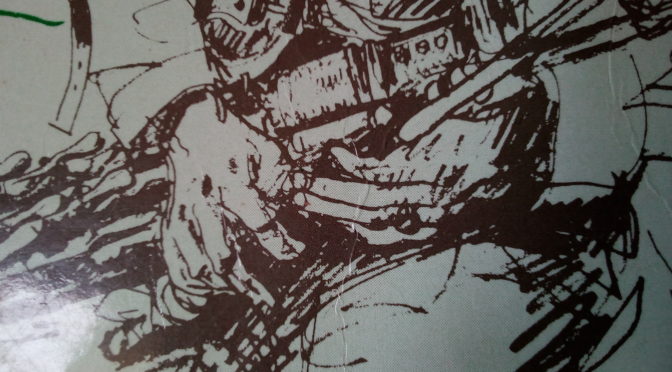I remember Ben Bagby taking a text describing African mbira players, and using it to get an inspiring description of what medieval harp music might be like. (‘Imagining the early medieval harp’, in A Performer’s guide to medieval music, ed. Ross Duffin, Indiana University Press, 2000, p.340-3)
So today I done the same with this text from Tomás Ó Canainn, Traditional music in Ireland, Routlege and Kegan Paul, London, 1978, p.87-90
The square brackets are where I have removed all the pipe-specific words and terms. In our minds we can insert harp references, so that we can try to read this as a guide to how to play Irish harp.
It has already been pointed out that the harmonic accompaniment provided by the […], particularly in the hands of an insensitive player, is a very mixed blessing indeed. The layout of the […] is a direct invitation to the [musician] to put the […] of his hand across all […] and obtain block chords which tend to obscure the melody, not only because of their chordal nature but because of the lack of balance between the […] and the […]. Many [musicians] do not seem to be aware of the musical satisfaction given by the interplay between a decorated melodic line and […] which provides a large number of higher harmonics…
The fact remains, however, that the […] are an integral part of the [instrument] and are used to a greater or lesser extent by most [players]. In dance music they are employed mainly as a rythmic device giving either a vamping bass as shown in Fig 6.5 or, occasionally, a two-part chord may be held right through a bar. The vamping bass is often obtained by using […] for the single notes on the […], while the double notes are produced by striking the […] simultaneously with the […]. When playing at speed this results in a rocking action of the wrist in going to and from the bass…
It is possible to get single notes on the […] as well, if these are desired… Two-part chords… are quite simple and are extensively used, as shown in Fig. 6.6
…any attempt to provide a full chorded accompaniment throughout a tune is bound to be boring. The preferred method, and that adopted by the better [players], is to introduce the […] during the repeat of the tune or a part of it, as a means of varying the arrangement.
The picture at the top is a drawing of Tomás Ó Canainn’s hands, from the cover of his book.

Note that these chordal patterns on the regulators are played with the right hand (see sketch of Ó Canainn’s hands at the top of the page). Just like the right hand is used for the bass on the Irish harp.